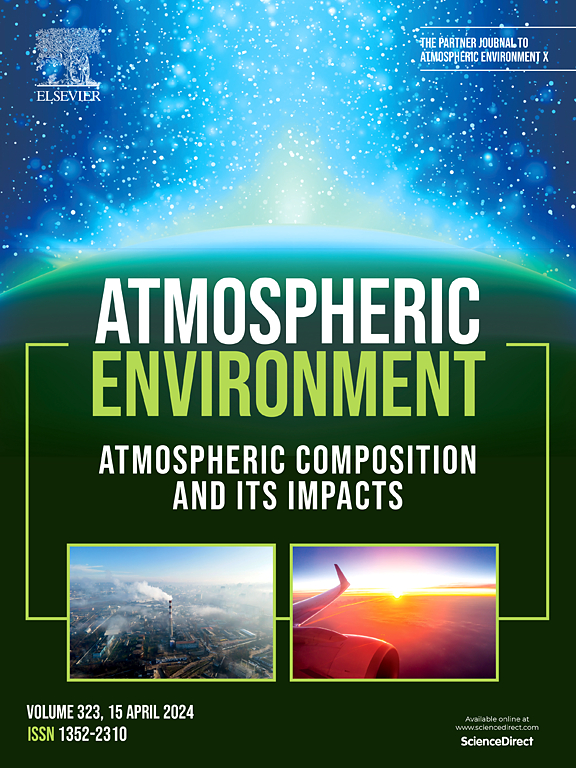A novel method for detecting natural dust source regions using satellite and ground-based measurements
IF 4.2
2区 环境科学与生态学
Q2 ENVIRONMENTAL SCIENCES
引用次数: 0
Abstract
This study presents a novel approach for identifying natural dust source regions, utilizing a combination of satellite and ground-based measurements. Unlike previous methods that relied solely on either satellite-derived land-cover characteristics or surface dust observations, this new method harmoniously integrates both. Its strength lies in accurately identifying natural dust source regions and their spatio-temporal variations by reflecting the satellite-based land-cover characteristics, ground vegetation, and snow-cover conditions obtained from natural dust source regions. Vegetation bareness index (B) and snow coverage index (S) were defined to represent the ground conditions, and their threshold values were determined by statistically combining satellite-derived data and ground dust detection records. A comparison of the new method against previous methods in identifying natural dust source regions in East Asia showed that the new method could accurately identify major dust source regions spanning the Tibetan Plateau, inner Mongolia, and the Horqin Desert in northeastern China, along with parts of Russia and Kazakhstan. In contrast, previous satellite-based methods either significantly underestimated the dust source regions, including only the Gobi and Taklimakan deserts, or overestimated by broadly covering the East Asian regions. The new method also proved superior in detecting monthly variation of the East Asian dust source regions due to short vegetation. The findings indicate that this new method effectively overcomes the limitations of previous methods, suggesting being beneficial in natural dust modeling through an accurate representation of natural dust source regions.
求助全文
约1分钟内获得全文
求助全文
来源期刊

Atmospheric Environment
环境科学-环境科学
CiteScore
9.40
自引率
8.00%
发文量
458
审稿时长
53 days
期刊介绍:
Atmospheric Environment has an open access mirror journal Atmospheric Environment: X, sharing the same aims and scope, editorial team, submission system and rigorous peer review.
Atmospheric Environment is the international journal for scientists in different disciplines related to atmospheric composition and its impacts. The journal publishes scientific articles with atmospheric relevance of emissions and depositions of gaseous and particulate compounds, chemical processes and physical effects in the atmosphere, as well as impacts of the changing atmospheric composition on human health, air quality, climate change, and ecosystems.
 求助内容:
求助内容: 应助结果提醒方式:
应助结果提醒方式:


